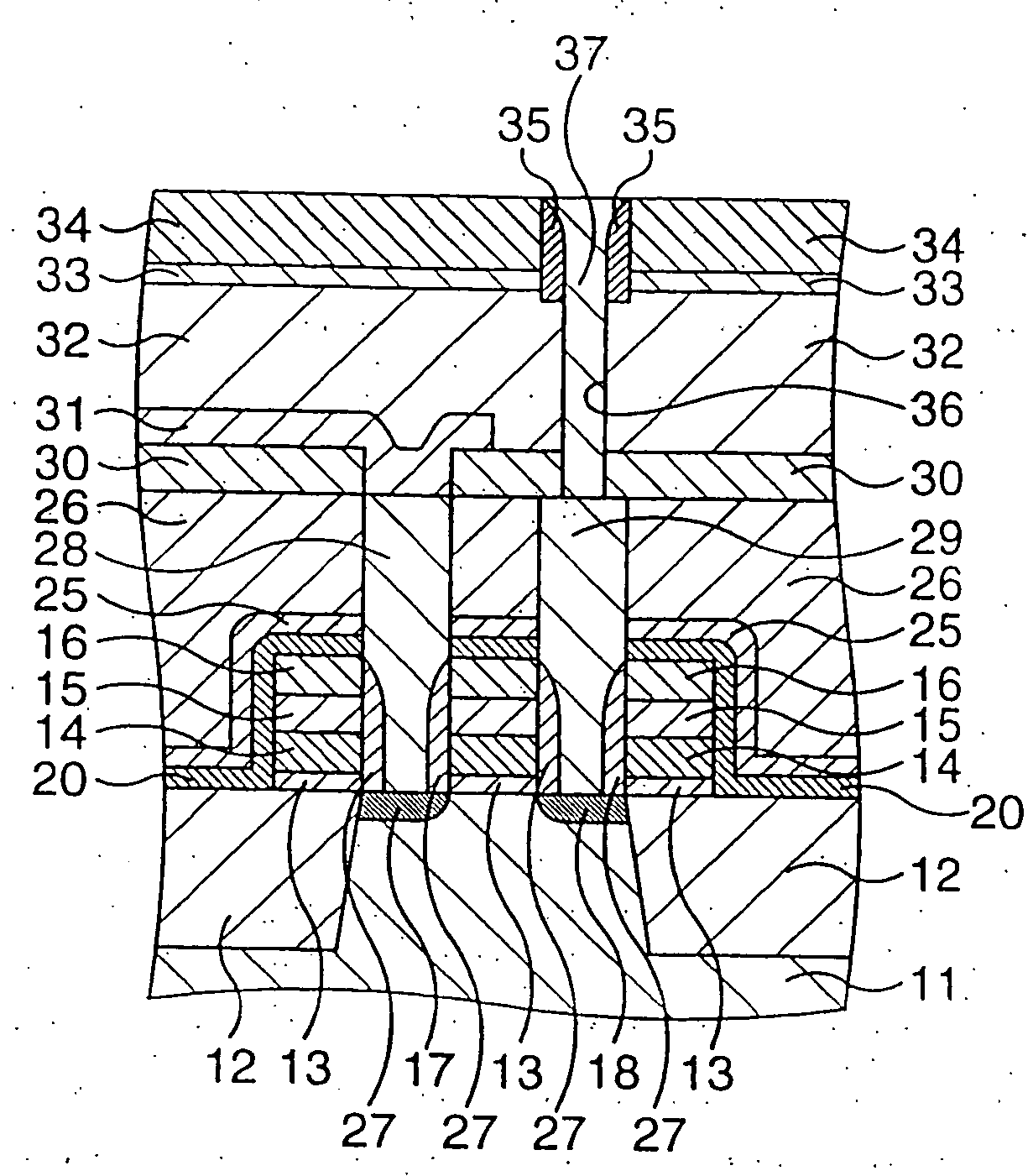Semiconductor device and manufacturing method thereof
- Summary
- Abstract
- Description
- Claims
- Application Information
AI Technical Summary
Benefits of technology
Problems solved by technology
Method used
Image
Examples
Embodiment Construction
[0112] At first, fundamental features of the present invention will be briefly described with reference to FIGS. 16A and 16B.
[0113] (1) A semiconductor device according to an aspect of the present invention comprises a first insulating film 2 formed over a semiconductor substrate 1, a second insulating film 3 formed on the first insulating film 2, a contact plug 5 made of a conductive material which vertically penetrates the first and second insulating films 2 and 3 and extends on the second insulating film 3, and a conductive film in contact with the upper surface of the contact plug 5 and part of the second insulating film 3.
[0114] In this manner, the contact plug 5 is made of a conductive material which vertically penetrates the first and second insulating films 2 and 3 and extends on the second insulating film 3. With this construction, The conductive film can be brought into close contact with the contact plug 5 in a three-dimensional manner. Besides, a large contact area bet...
PUM
 Login to View More
Login to View More Abstract
Description
Claims
Application Information
 Login to View More
Login to View More - R&D
- Intellectual Property
- Life Sciences
- Materials
- Tech Scout
- Unparalleled Data Quality
- Higher Quality Content
- 60% Fewer Hallucinations
Browse by: Latest US Patents, China's latest patents, Technical Efficacy Thesaurus, Application Domain, Technology Topic, Popular Technical Reports.
© 2025 PatSnap. All rights reserved.Legal|Privacy policy|Modern Slavery Act Transparency Statement|Sitemap|About US| Contact US: help@patsnap.com



